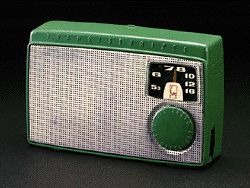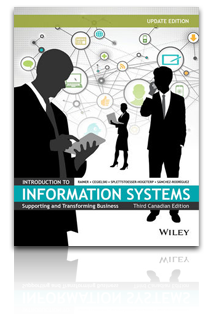Description: Up through the mid-1970s, most consumer electronics products were built with these devices called vacuum tubes. They’re about the size of a child’s fist.
Source: www.phoenix.edu
Date: Oct 28, 2011

A TV had about 20 vacuum tubes inside of it. And as a consequence, the TVs of the time had to sit on, stand on the floor. They’re about this tall. Cost about $4,000 in today’s money. So only families that had big homes and big bank accounts could own TVs. The transistor was disruptive relative to the vacuum tube, because when it emerged it couldn’t handle the high power that was required to be used in one of these big floor-standing TVs. Or the radios of the time sat on the, the, uh, credenza in the dining room.
Every one of the vacuum tube companies, and these are the giants of the electronics industry, RCA, the Radio Corporation of America, Zenith, Westinghouse, Motorola, Philco, they all took a license to the technology, and they carried the license into their own laboratories and framed it as a technological problem. In other words, the transistor just can’t handle the power required to be used in the market. Read the Rest of Story
Questions for discussion:
- Why are transistors considered a disruptive technology??
2. What do feel are some other disruptive technologies?


Meagan
Transistors are considered a disrupted technology because they made a product that was limited yet was a great idea that the consumers loved and because of this people thought that one product was better than nothing. So instead of buying similar products with different technologies they were buying these limited products. They were buying these products because they were easy to use, they were portable and they were handy. Consumers like simple products that are easy to use and products that you can use everywhere, and have no restrictions on them. So because consumer’s likes products with transistors better the other technologies soon were not making a profit and ended up going bankrupted and they soon disappeared. But this didn’t happen right away. Transistors became better and better as time went on, each introducing a bigger and better limited product that was even better than the first one. These products also made life easier for the consumers and became more convenient so to them it was easier to buy these products over others because consumers didn’t have as much hassle when they were dealing with them. This made consumers happy and so they continued to buy these products, even though they only had a limited supply the customers still bought them and waited for them because to a consumer anything is better than nothing.
Destiny S
Disruptive technology is in essence a product or innovation that creates a new market, or market value. This newly created market, or market value, may eventually disrupt the existing market (product or innovation). This could be by way of replacing old and outdated technology, for example. Prior items such as vacuum tubes are very different than transistors. Transistors changed (‘disrupted’) many products, such as televisions and radios. One example of disruptive technology would be the creation of USB drives. USB drives fundamentally changed the storage of computer information by replacing floppy discs. Global position systems changed how we pilot the world on our travels, as paper maps became inferior. LCD screens replaced CRT monitors that, while making more space on office desks, forced companies to adopt the new technology or cease existence once LCDs took over the market. Finally, vehicles, once mass-produced, greatly disrupted the rail car service industry.